Click on images to enlarge
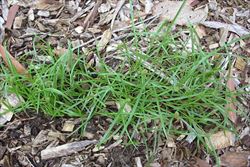
habit (Photo: Sheldon Navie)
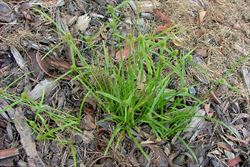
habit (Photo: Sheldon Navie)

creeping underground stems and leaves (Photo: Sheldon Navie)
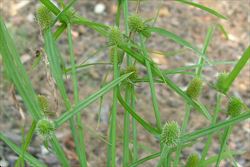
stems and greenish coloured seed-heads (Photo: Sheldon Navie)
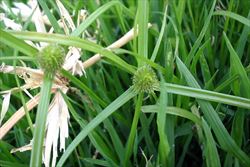
close-up of seed-heads subtended by several leafy bracts (Photo: Sheldon Navie)

seedling (Photo: Sheldon Navie)
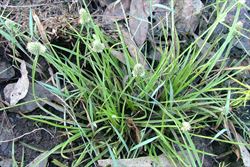
tufted habit of the very similar kyllinga weed, Cyperus sesquiflorus (Photo: Sheldon Navie)
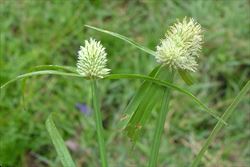
whitish-coloured seed-heads of kyllinga weed, Cyperus sesquiflorus (Photo: Sheldon Navie)

comparison of the seed-heads of Mullumbimby couch (Cyperus brevifolius), on the left, and kyllinga weed (Cyperus sesquiflorus), on the right (Photo: Sheldon Navie)
Scientific Name
Cyperus brevifolius (Rottb.) Hassk.
Synonyms
Kyllinga brevifolia Rottb.
Family
Cyperaceae
Common Names
globe kyllinga, green kyllinga, kyllinga, Mullumbimby couch, perennial greenhead sedge, short-leaf flatsedge
Origin
This species is widespread in the tropical, sub-tropical and warmer temperate regions of the world and its exact origin in obscure. However, some authors believe it to be native to tropical Asia and the warmer temperate regions of China and Japan.
Naturalised Distribution
This species is very widely naturalised in the coastal and sub-coastal regions of Australia. It is particularly common in the northern and eastern parts of the country (i.e. in the northern parts of Western Australia and the Northern Territory, in south-eastern, central and northern Queensland, in eastern New South Wales and in the ACT). Also recorded in the the inland regions of southern New South Wales, in some parts of Victoria, and in the south-western parts of Western Australia. It is also naturalised on Lord Howe Island and Norfolk Island, and possibly naturalised in South Australia.
Notes
This widespread sedge is a common weed of habitation (i.e. gardens and lawns), disturbed sites, waste areas and wetter pastures in many regions. It has also invaded disturbed wetlands, swamps and creeks and for this reason it is also regarded as an environmental weed in parts of Western Australia, Queensland, New South Wales and Victoria. For example, Mullumbimby couch (Cyperus brevifolius ) is listed among the top 200 invasive plants in south-eastern Queensland. It also appears on environmental weed lists for the wider Sydney and Blue Mountains region and the Goulburn Broken Catchment in Victoria, and is listed as a moderately invasive species in the Environmental Weeds Strategy of Western Australia.
In Hawaii it grows along trails in wetter forests and in Fiji it infests waterways, river banks, hillsides and cleared mountain ridges. In New Zealand it sometimes forms dense extensive swards on damp flats.

